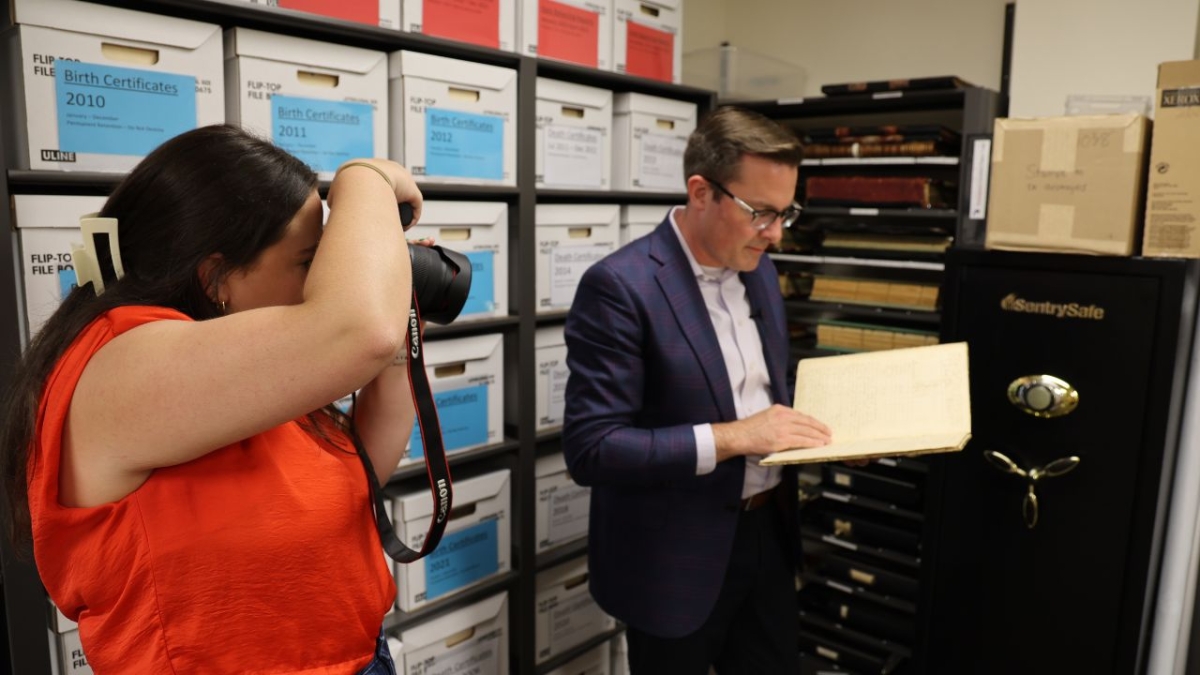Women have had the right to vote in the United States since the 19th Amendment was ratified in August 1920. But the U.S. was far from one of the first countries (some lists put it at 27th) to grant women’s suffrage. Though levels of suffrage varied — often depending on such factors as a woman’s social status — several countries, including New Zealand, the United Kingdom and Canada, beat the U.S to the equality punch.
Miki Kittilson, a professor at Arizona State University’s School of Politics and Global Studies, researches gender equality in legal systems and politics around the world. Her book “The Gendered Effects of Electoral Institutions: Political Engagement and Participation” looks at the reasons why women in most countries around the world have tended to lag behind men in various forms of political participation.
As part of a yearlong seriesFollow along on Twitter — @asunews — all year as we share quotes, characters and historical tidbits from the long road to the vote. that kicked off last August in commemoration of the 100th anniversary of the ratification of Amendment XIX, ASU Now spoke with Kittilson to examine the factors that contribute to differences in policies and political participation and to see how countries around the world stack up.
Miki Kittilson
Question: What are some universal factors that contribute to women’s participation in the political process?
Answer: There are still persistent gaps around the world, not necessarily in women’s voting participation, but in other forms of political behavior and women’s belief that they can make a difference. A lot of older theories about why that is will put the onus on women: If only women were more educated, if only women would step forward. They put the burden on women to change. But I think what’s really behind it is that the way the rules are structured can either draw women into the political process or they can send signals that are exclusionary. There are different ways elections can be structured, and those that are more inclusive and are based on principles of power-sharing tend to have higher levels of engagement among women. So I believe it’s more about the structure of political processes, not women’s attitudes or resources.
Q: How does women’s participation compare to men’s?
A: There’s incredible variation around the world in terms of gender inequity and participation in the political process. Some countries are far more equal than others. But gaps do tend to persist for a variety of different forms of participation. Not necessarily voter turnout — if anything, voter participation is more equal around the world today than at any time in the past. But other forms of participation that are more time intensive, such as protest activities, tend to be unequal in terms of gender representation. And gender differences in attitudes about politics also persist. For instance, more women report a lack of interest in discussing politics socially.
Q: Was the international Women’s March in January 2017 an anomaly?
A: No, I don’t think it was an anomaly. There’s definitely a rich history of women organizing and staging protests and demonstrations, such as the suffrage movement, various labor movements and women’s role in the civil rights movement. But some movements have tried to sideline women.
Q: While researching your book, were there any countries whose policies or institutions stood out to you, for better or worse?
A: We make the argument in the book that countries that have proportional representation or other forms of power sharing are more inclusionary. For example, the Netherlands has quite equal proportional representation.
Q: How does the U.S. compare to other countries as far as when women were given the right to vote?
A: The first country that gave women the right to vote was New Zealand, in 1893. Over the next 20 years, a few more countries followed suit. The early 1900s were really a turning point for women’s suffrage. In 1917, Canada gave women the right to vote, followed by maybe 10 or 12 other countries. It really picked up after World War I. Then the U.S. ratified the 19th Amendment in 1920.
Q: Was there something about WWI that made it a turning point for women’s suffrage?
A: Not necessarily the war itself, but war certainly disrupts a lot of things in the economy and society in general. Around that time, you had the first wave of women’s movements. Among other things, women were protesting for access to higher education, and as literacy rates for women started to pick up, so did opportunities in the workforce. As women entered the paid workforce, they began advocating for the right to vote because they recognized that voting was an important step toward being able to secure their demands and improve their status in society.
Q: The U.S. was pretty late to the game on granting women’s suffrage, globally speaking. Why do you think that is?
A: I’d say the women’s suffrage movement started roughly around the same time in the U.S. as it did elsewhere, but reasons for opposition varied from country to country, which did a lot to determine where the movement was successful. In the U.S. at that time, people thought it would disrupt the family and that women didn’t have the qualities or characteristics that were necessary to participate as a citizen in a democratic election.
Top photo courtesy Pixabay
More Law, journalism and politics

Native Vote works to ensure the right to vote for Arizona's Native Americans
The Navajo Nation is in a remote area of northeastern Arizona, far away from the hustle of urban life. The 27,400-acre reservation is home to the Canyon de Chelly National Monument and…

New report documents Latinos’ critical roles in AI
According to a new report that traces the important role Latinos are playing in the growth of artificial intelligence technology across the country, Latinos are early adopters of AI.The 2024 Latino…

ASU's Carnegie-Knight News21 project examines the state of American democracy
In the latest project of Carnegie-Knight News21, a national reporting initiative and fellowship headquartered at Arizona State University’s Walter Cronkite School of Journalism and Mass Communication…

